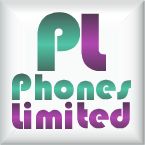Press release -
The Main Specifications Of The Best-Selling iPhone 4 - An Overview
The Apple iPhone 4 is certainly a smartphone to be emulated, taking the world by storm since its release last year in June 2010. As if its predecessor the iPhone 3GS released in July 2009 was not already good enough, Apple raised the ante even further with the iPhone 4, literally living up to its slogan, "This changes everything.. again". So basically, what has Apple really changed? Let's now take a closer look at the iPhone 4 to see what truly stands out.
Being a touchscreen phone, as expected the iPhone 4 retains the smoothness and slickness that has become Apple's trademark and huge competitive edge over its rivals. In fact, Apple has made the touchscreen even more responsive with a faster Apple A4 processor running at 1GHz, and a beefed up 512MB of eDRAM. Once you look more closely at the touchscreen, playing with some apps or browsing the Internet, then the strongest feature of the iPhone 4 becomes noticeable: the Retina display.
Boasting a record-setting screen resolution of 960x640 pixels on its 3.5-inch screen, Apple claims to have beaten even the human eye itself, cramming in a pixel density that is so high that your eye can no longer distinguish any individual pixels. At lower resolutions such as the 480x320 pixels on the iPhone 3GS, you can still spot individual pixels by looking closely at the display. However, moving back to the iPhone 4 that now packs four times the pixels of earlier models, it is certainly true that the difference in resolution is stunning and remarkable. At such a high resolution of 326 ppi (pixels per inch, a measure of image quality using pixel density by screen size), both graphics and text look so sharp and smooth that no individual pixels can be spotted as promised by Apple. In fact, no other smartphone has come close to such a high resolution; probably the closest being an 800x480 resolution as seen on many Android smartphones by HTC and Samsung. Hence the name Retina display which is indeed a visual treat for anyone's eyes.
The iPhone 4 Retina display uses the same technology found in the Apple LED Cinema Display and iPad, called IPS (in-plane switching) which provides a wider viewing angle than most other typical LCDs. This allows clear viewing of the iPhone 4 from almost any angle, unlike earlier LCDs that could only be clearly viewed directly from the front. Not only does the Retina display pack four times the number of pixels in its predecessors; it also offers four times the contrast ratio that produces much more vivid colours on its screen for satisfying viewing.
On the physical front, the Retina display of the iPhone 4 is supported by glass that has been thoroughly strengthened. Not only is the glass harder, it is also more durable and resistant to scratches, with an oil-resistant layer to help keep the screen cleaner with fewer fingerprints. Packed with LED lighting and a light sensor that automatically adjusts brightness of the screen based on surroundings, the iPhone 4 intelligently adjusts its Retina display screen for optimal viewing. It would be interesting to see how much more can the Retina display be improved in future, and whether that is going to make any difference if truly the human eye can no longer distinguish that many fine pixels.
Check out the best iPhone 4 deals and White iPhone 4 deals
Topics
- Data, Telecom, IT
Categories
- iphone 4 deals
- apple iphone 4 deals
- white iphone 4deals
- white iphone 4
Regions
- England
About Phones Limited: A price comparison website for the latest mobile phone deals from over 20 leading UK mobile phones retailers and networks resulting in over 2 million deals compared daily. http://www.phoneslimited.co.uk/
